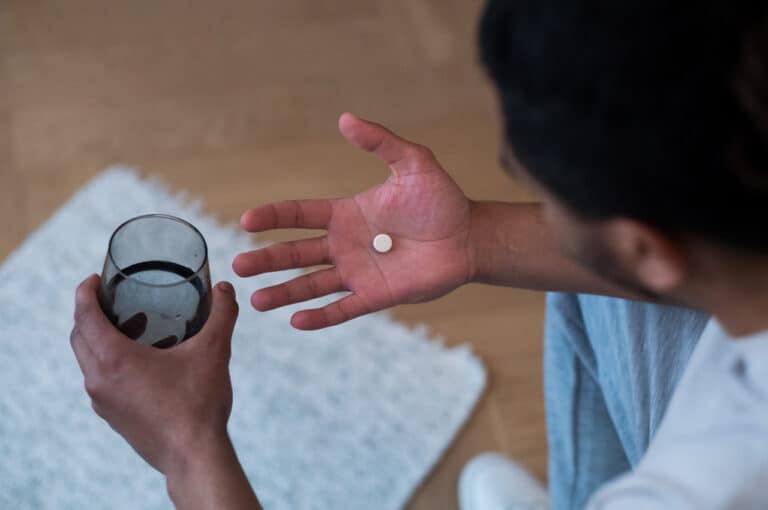If you or someone you know has questions about gynecomastia and whether women can develop this condition, you are not alone. Many patients come to the New Jersey Gynecomastia Center feeling confused by the terms, symptoms, and underlying causes for breast tissue changes in both men and women.
Understanding who develops gynecomastia, how it is diagnosed, and what causes it can help guide you toward the right care. Our goal is to clearly discuss everything you should know about the possibility of gynecomastia in women, along with related conditions, treatments, and what to expect if you are worried about breast tissue changes.
Let’s discuss what sets gynecomastia apart, what similar issues may look like in women, and how we approach each patient’s unique needs.
Key Takeaways
- Gynecomastia Definition: True gynecomastia refers to the benign enlargement of male breast glandular tissue rather than fat.
- Women and Gynecomastia: Gynecomastia cannot by definition occur in women, but women may develop similar breast glandular tissue issues.
- Related Female Conditions: Conditions such as mastoplasia, fibrocystic changes, and hormonal imbalances can mimic aspects of gynecomastia in women.
- Causes and Risk Factors: Hormonal changes, medications, tumors, and certain health problems can all contribute to abnormal breast tissue growth in women.
- Diagnosis and Testing: Proper evaluation involves a thorough medical history, physical exam, and often imaging or lab tests to identify underlying causes.
- Treatment Options: Treatments generally depend on the specific condition, ranging from observation and lifestyle changes to medication or surgery.
- Personalized Care: Each patient’s case is unique, so working with experienced breast specialists ensures accurate diagnosis and care.

Understanding Gynecomastia: Core Concepts
You might hear the term gynecomastia and wonder exactly what it refers to. Gynecomastia describes a distinct medical condition with specific criteria. Knowing the true definition ensures we use the term correctly and identify the real concern, especially when discussing male versus female breast tissue changes.
What Is Gynecomastia?
Gynecomastia is the benign enlargement of glandular breast tissue in men. This is not merely fat. It’s a true proliferation of the breast ducts and stroma, typically resulting from an imbalance between estrogen and androgen hormones.
Male patients with gynecomastia may experience a firm, rubbery mass under the nipple-areolar complex. Sometimes, tenderness or sensitivity develops as well.
Gynecomastia can occur at any age. It is especially common during puberty, older age, or after certain medication exposures.
Gynecomastia Versus Fat Accumulation
Not all enlarged male breasts are due to gynecomastia. In fact, many men and boys develop a similar-looking chest because of excess fat, which is called pseudogynecomastia.
Pseudogynecomastia does not involve the proliferation of true breast gland tissue. Instead, fat accumulates beneath the nipple and surrounding area. Distinguishing the two is essential, as the causes and treatments vary significantly.
Why Use the Term “Gynecomastia” For Men?
Gynecomastia, by its definition and origin, is a male condition. Female breasts naturally contain more glandular tissue and ductwork, shaped by their hormonal environment.
In the medical literature and in our practice, the diagnosis of gynecomastia applies specifically to patients assigned male at birth. To avoid confusion, we reserve this term for male breast glandular enlargement.
Can Women Have Gynecomastia?
Women often wonder if they can receive a diagnosis of gynecomastia or experience something similar. The answer lies in both medical terminology and the nature of female breast tissue.
The Medical Definition for Women
Clinically, gynecomastia does not occur in women. This term exclusively describes abnormal breast tissue growth in males, due to their normally low breast glandular volume.
Females already possess significant breast glandular tissue due to their normal hormone environment. As a result, breast growth or changes in women follow different patterns and have separate diagnoses.
Why the Confusion Occurs
Despite clear definitions, women may seek care for breast tissue changes they fear resemble gynecomastia. There are a few reasons for this:
- Online resources sometimes use the term incorrectly.
- Some women may notice unusual firmness, swelling, or pain in their breasts, and wonder if it mirrors gynecomastia.
- Transgender and nonbinary patients assigned female at birth may encounter similar confusion when experiencing unexpected breast changes.
Proper labeling of the condition ensures accurate diagnosis and treatment. Our center focuses on the real mechanisms behind your symptoms rather than labels alone.
Female Breast Glandular Enlargement: Related Conditions
While women cannot technically have gynecomastia, they do sometimes suffer from excessive or abnormal breast gland growth. These problems warrant medical attention and have their own specific diagnoses.
Common Female Breast Tissue Disorders
Several breast conditions in women can mimic or otherwise resemble gynecomastia. Understanding these differences is important for getting the right care.
Fibrocystic Breast Changes: These are very common benign changes in breast tissue. They often cause lumpiness, swelling, tenderness, and may worsen around menstruation.
Breast Hypertrophy/Macromastia: Some women experience an abnormal increase in breast size unrelated to weight gain, sometimes without clear cause. This can be disabling and uncomfortable.
Mastoplasia: This term covers abnormal or excessive development of breast tissue in women. It may result from puberty, pregnancy, hormone imbalance, or other underlying medical matters.
Less Common Causes
In rare cases, women can experience rapid or asymmetric breast enlargement. This may indicate underlying problems such as:
- Hormonal tumors or other endocrine disorders
- Certain medications, such as antipsychotics or hormone therapy
- Chronic illnesses or metabolic diseases
Each of these conditions warrants a detailed diagnostic approach. Correctly identifying the source is necessary for safe, effective management.

Causes of Excessive Female Breast Tissue Growth
Multiple factors can drive abnormal or distressing breast glandular enlargement in women. Addressing these causes ensures you receive personalized care and appropriate work-up.
Here is an overview of the most common causes.
Key Causes and Risk Factors
We see patients with a wide variety of medical histories. While each case is unique, the following factors account for the majority of breast tissue changes in women:
- Hormonal Fluctuations: Puberty, pregnancy, perimenopause, and menopause often involve changes in estrogen and progesterone levels. These shifts can prompt excessive breast tissue growth or new lumps.
- Medications and Supplements: Some drugs, including certain antidepressants, birth control pills, antiandrogens, or herbal remedies, affect hormones and breast tissue sensitivity.
- Systemic Illnesses: Problems such as liver disease, thyroid dysfunction, or pituitary disorders may influence overall hormone balance and prompt breast changes.
- Genetics: Family history significantly impacts your risk for conditions like macromastia and fibrocystic changes.
- Tumors or Cysts: Rarely, noncancerous tumors or cystic lesions can grow and cause breast firmness or swelling.
- Weight Fluctuations: Significant weight gain or fat redistribution might contribute to both glandular and fatty breast changes.
If you experience sudden or noticeable breast changes, especially if accompanied by pain or discharge, you should schedule an evaluation as soon as possible.
How We Diagnose Abnormal Breast Enlargement in Women
Accurate evaluation starts with your story. At our office, we take a thorough approach to understanding your symptoms before moving to any interventions.
The Diagnostic Process
We ensure every patient receives a careful, individualized work-up. Here is how we approach diagnosis for abnormal breast enlargement in women:
- Medical History: We discuss your symptoms, timing, medical history, medications, menstrual cycles, and any family history of breast problems.
- Physical Examination: A detailed breast exam helps us assess for firmness, nodularity, symmetry, and signs like skin changes or nipple discharge.
- Imaging: If needed, we may order a breast ultrasound or mammogram to see inside the breast and identify focal masses or cysts.
- Laboratory Tests: In selected cases, blood tests check hormone levels, liver, and thyroid function, or look for signs of underlying disease.
Importance of Individualized Assessment
No two patients are the same. Factors like age, reproductive status, family history, and prior surgeries all influence the final diagnosis.
It’s important not to self-diagnose breast changes. If you are concerned about any lump, swelling, or discomfort, schedule a professional assessment for personalized guidance.
Treatment Options for Female Breast Glandular Enlargement
Treatment depends on the underlying diagnosis, symptoms, and your individual priorities. Our surgeons at the New Jersey Gynecomastia Center take time to craft a personalized plan for each woman we see.
Observation and Monitoring
Not all breast changes in women require active intervention. When the findings are benign and not worrisome for cancer, we may recommend regular monitoring, especially for:
- Mild fibrocystic changes
- Hormonal swelling around your period
- Benign cysts without suspicious features
Observation includes periodic clinical exams and imaging, depending on your risk factors and age.
Medications and Medical Therapies
In cases where hormones or specific medications trigger abnormal breast changes, we may recommend:
- Adjusting, stopping, or changing the offending drug if possible
- Hormonal therapies to balance estrogen and progesterone
- Medical management for systemic illnesses like thyroid or liver disease
Close teamwork between our office and your primary care or endocrinology provider is often helpful for complex cases.
Surgical Options
For patients with symptomatic or disabling breast enlargement, surgery may be an option. These techniques include:
- Breast reduction surgery: Removal of glandular tissue and excess skin to reshape the breasts and alleviate symptoms
- Cyst or mass excision: Removal of discrete benign growths if they cause pain, asymmetry, or concern
We discuss risks, benefits, and realistic expectations for each surgical approach during your consultation.
Lifestyle Changes
Sometimes, simple lifestyle modifications can help minimize symptoms, including:
- Supporting bras for better comfort and reduced pain
- Limiting caffeine and salt intake if you experience fibrocystic breast pain
- Maintaining a healthy weight for overall breast health
No single therapy fits every woman. Our goal is to design a plan that feels right for your body and circumstances.
When to See a Specialist for Breast Changes
Deciding when to seek professional evaluation can feel stressful. You should always prioritize your peace of mind over worry.
How to Know If You Should See a Doctor
Some symptoms are worth prompt medical attention. You should schedule a visit if you experience:
- Unexpected or rapid breast enlargement: Especially if one side grows faster or feels abnormal.
- Persistent pain or tenderness: Not linked to your menstrual cycle.
- Lumps, firmness, or thickening: That do not go away after your period.
- Nipple discharge: Especially if bloody or associated with a lump.
- Skin changes: Redness, dimpling, or unusual rashes on the breast or nipple.
Some mild breast tenderness, especially around menstruation, is common and usually not worrisome. However, persistent or troubling changes deserve careful evaluation.
Psychological and Social Impacts of Breast Changes
We understand that breast appearance, size, and feel deeply affect your confidence and daily comfort. At the New Jersey Gynecomastia Center, we work with many women who feel anxious or embarrassed by sudden or unexpected breast changes.
Emotional Effects
You may feel worried about your health, self-image, and sexuality. Pain, asymmetry, and noticeable swelling can impact clothing choices or social activities.
We offer a supportive process designed to help you feel informed and empowered, no matter the diagnosis.
Support Resources
Many women find reassurance through support groups, counseling, or speaking with other patients who have experienced similar concerns. If you need referrals for emotional support, our team can help connect you with appropriate resources.
Clarifying Gynecomastia and Breast Changes in Women
Recognizing what gynecomastia is, and how women experience their own forms of abnormal breast growth, is the first step toward peace of mind. Women cannot have true gynecomastia, but abnormal or excessive glandular tissue growth can still occur and may look and feel very similar.
A careful evaluation, thoughtful diagnosis, and tailored treatment can resolve symptoms and restore confidence. At the New Jersey Gynecomastia Center, we remain dedicated to answering your questions, evaluating your concerns, and offering comprehensive, compassionate care.
If you notice any breast changes, feel uncertain about your symptoms, or simply want more information, we encourage you to reach out today. Our team is ready to support you with trusted expertise and personalized attention every step of the way.






